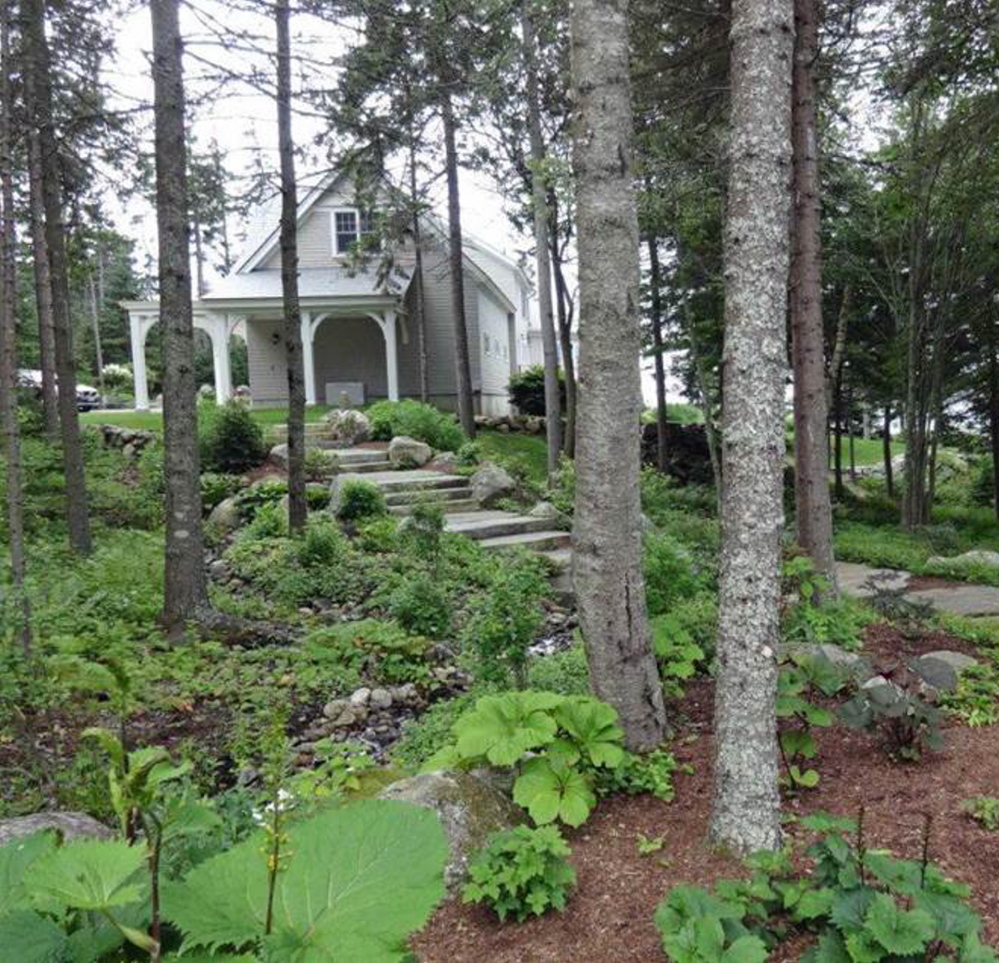Garden tours cater to the natural nosiness of the human species. Sure, the tours benefit worthwhile organizations and are educational, but mostly people want to see the parts of other people’s property that are usually out of view.
The Friends of the Eastern Promenade, which is holding its tour July 12 after taking a break from its until-then-annual tours last year, acknowledges that curiosity by calling its tour Hidden Gardens of Munjoy Hill. Yes, the gardens are hidden – but you and the few select others who purchase tickets can see them.
Usually you don’t find out what gardens are on a tour until the day of the show. The organizers don’t want people showing up without tickets, after all. But you can be sure any garden on a tour has something worth seeing or the organizers wouldn’t have selected it. And the owners and/or hired hands have worked like crazy getting the gardens into perfect condition.
Organizing and running a garden tour takes a lot of work. At least one committee member has to line up homeowners willing to show their gardens, someone else has to get publicity, and someone needs to arrange ticket sales.
People attending should do a little work, too, although it is not required. You can enjoy yourselves by just wandering through the gardens, chatting with others on the tour or those who are hosting you, getting a bit of gentle exercise and enjoying the beauty.
But if you want to get ideas for improving your own garden, take a camera and a notebook so you can remember the things you like.
The first thing to study is the hardscaping: things like rock walls, fences, sheds, sculpture, umbrellas, benches, patios, decks, stairways and pathways. Did the owners do something interesting to deal with uneven ground, to funnel traffic, provide focal points or add interest? Is there something unique about the rocks used in the pathways? Are there water features? Does the design show off natural ledges on the property?
Those items can be transferred to any garden because they don’t care how much sun they get or how cold it gets in winter.
What I find most interesting in other people’s gardens is how other gardeners mix the plants. Our garden is small, and my wife and I are plant geeks who like to see how different plants look, so we have a lot of stand-alone perennials and shrubs and can’t do the mass plantings that many garden writers advise. But we do like to make sure the colors of one flower don’t clash with the plant growing next to it. By taking a garden tour, we get to see how other people handle plant groupings. Do they have climbers growing through a shrub? Do they have layers with shorter plants in front and taller ones in back? Or the opposite – the tall plants in front as “see through” plants and the short ones in back? Do they have “island beds,” or is everything either at the edge of the property or next to the house? How do they handle the transition to any wild areas on their property?
I spend a lot of time scrutinizing vegetable gardens because I am always seeking ideas for efficient use of space, plus I like to see what vegetable varieties other people are trying and how their crops are doing.
I look at containers, too – not so much for the plants people use as for what kind of containers people have created from junk they unearthed in their barns and attics.
People have different ideas about labeling, so if you spot a gorgeous iris or astilbe that you want for your own garden, you might have trouble finding out exactly what it is. Sometimes the property owner, assuming he or she is in the garden during the tour, might not even be able to identify the plant. My wife and I have dozens of plants for which the labels have been lost and the names forgotten. That is where the pictures come in. Take a photo, go to your local garden center, and see if they can identify it.
All garden tours are held rain or shine – and if you don’t mind getting wet and letting your hair get frizzy, many gardens actually look better in the rain.
Who knows what kind of secrets you will find?
Tom Atwell has been writing the Maine Gardener column since 2004. He can be contacted at 767-2297 or at tomatwell@me.com.
Send questions/comments to the editors.



Success. Please wait for the page to reload. If the page does not reload within 5 seconds, please refresh the page.
Enter your email and password to access comments.
Hi, to comment on stories you must . This profile is in addition to your subscription and website login.
Already have a commenting profile? .
Invalid username/password.
Please check your email to confirm and complete your registration.
Only subscribers are eligible to post comments. Please subscribe or login first for digital access. Here’s why.
Use the form below to reset your password. When you've submitted your account email, we will send an email with a reset code.